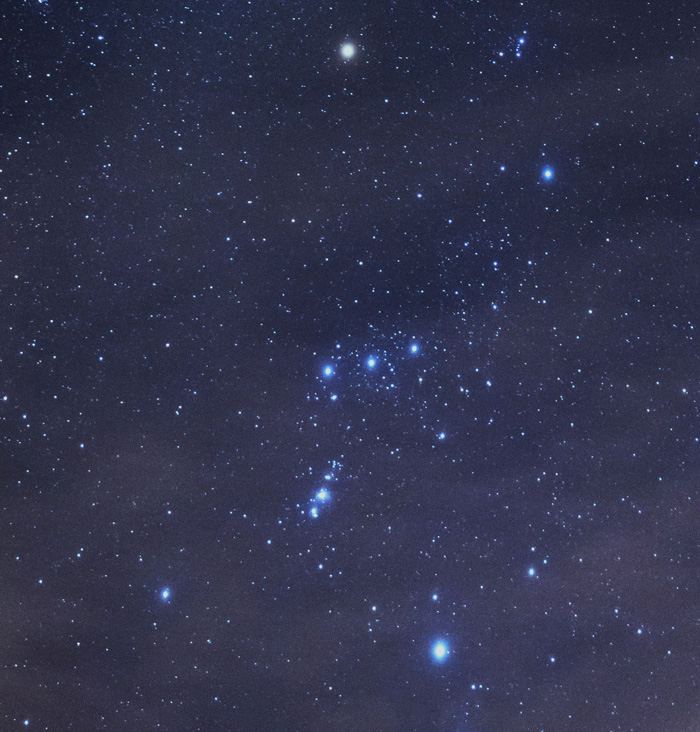What to look for in the night sky this winter
December 6, 2021
Posted by Lake Erie Nature and Science Center

As we near the shortest day of the year, many of us reminisce about the long summer days with plenty of time to enjoy the outdoors after school or work.
But despite chillier temperatures, there are several ways to enjoy nature during the winter months. And that includes nighttime sky viewing. Below are a few favorite objects to look up for this season.
Orion
One of the biggest and brightest constellations in the night sky is Orion the Hunter. First, look southeast for three equally bright stars in a straight line that form “Orion’s belt.” Serving as his right shoulder is the supergiant star Betelgeuse, which shines brightly with a reddish tint.
At Orion’s left foot lies the slightly brighter star, Rigel. Hanging below the center star in Orion’s belt is his sword, which features the Orion Nebula, or Messier 42. Visible as a dim, fuzzy object to the naked eye, this nebula appears as a large gas cloud when viewed with binoculars or a small telescope.
Jupiter and Saturn
In the southwest skies after sunset, you will see two bright objects — our solar system’s largest planets, Jupiter and Saturn.
Jupiter is the brighter object you will see higher in the sky, with Saturn slightly lower toward the horizon. Details of the planets can be seen with small telescopes and large binoculars.
Take advantage of this opportunity while you can, as these beautiful planets will be lost in the light of sunset by February.
Geminids Meteor Shower
One of the best meteor showers of the year, the Geminids will peak on the evening of Dec. 14. Although this is the peak, Geminids meteors can usually be seen up to a week before and after the peak date.
Meteor showers are named after their “radiant” point, or the area of the sky in which they appear to originate. In this case, the constellation Gemini.
The later in the evening you wait, the higher the chance of seeing meteors, with the best time being after midnight.
Make sure you find an area with dark skies and try to minimize using your “gadgets,” as the bright light from screens can significantly reduce your visual light sensitivity and make viewing dim meteors more difficult.
Winter Solstice
The Winter Solstice occurs on Dec. 21, which means the South Pole will be tilted toward the sun. The sun will have reached is southernmost position in the sky, resulting in the shortest day of the year and the first official day of winter.
Lake Erie Nature & Science Center will host two Winter Solstice Celebration programs on Dec. 17, at 4:30 p.m. and 6 p.m. Take a lantern-lit hike through Huntington Reservation, meet native animals and make a simple craft near the cozy, crackling fire.
Visit Schuele Planetarium to learn the meaning of the solstice, tour the night sky and hear about the upcoming launch of the James Webb Telescope.
Weather permitting, telescope viewing will be available outdoors.
Join Lake Erie Nature & Science Center for free general admission and a variety of nature-based programs from 9 a.m. to 4 p.m. Tuesdays through Saturdays. Plan your visit at www.lensc.org/program-calendar.

